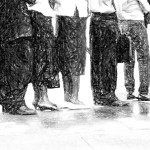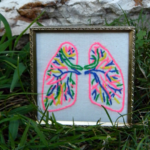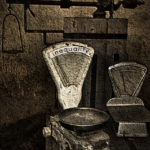Donating à la carte

Decisions are hard. Especially when the outcomes are important, the options are numerous, and relevant information is hard to find.
For many everyday decisions (where to eat, what clothes to wear, what to do tonight), I have a pretty good idea of what I can do, what I’d like to achieve, and how likely I am to do so. And despite most of these decisions being largely inconsequential I still consider them in great detail. I assume others are somewhat similar to me, delicately wasting their processing power on life’s minutiae.
Yet, of all the choices we make, one of the most impactful seems among the least rationally considered: donations.
We can donate to almost anything, anyone, at any time. But do we consider the options available before giving? And if so, how are we to weigh up the pain of a malnourished child to the impact of a polluted river; the needs of our local lifesaving club to the suffering of 100 battery hens; climate change to the housing needs of a woman escaping domestic violence?
We’re so overwhelmed by the immense number of possibilities that we often yield to impulse, emotion and social pressures. But these decisions deserve our most careful consideration. We have the power to change the status quo. And to ignore this is to choose to do nothing.
Thanks to the interwebs it’s now as easy to support locally as it is to support (almost) anywhere else in the world. So, we can cast as wide or as narrow a net as we like when looking to get behind a cause.
Modelling donations – a menu of causes
The model below presents the main options available for donations. Its aim is to help us make more conscious decisions, and explicitly remind us of what we’re ignoring.
Using the model – 2 paths to better donations
The model can be used in two ways:
1. Proactively – help guide your thinking when deciding on a cause, and
2. Re-actively – recognise when a charity focuses on a particular group at the expense of others.
Method 1 is great for clarifying your personal values and systematically prioritising the areas you’d like to support.
Hypothetical example 1: the proactive method
I could start by acknowledging that I care more for people than animals and the environment. Then, I explicitly recognise a desire to help the local LGBTIQ community. Lastly, wanting to have an immediate impact, I support a charity which focuses on providing every-day services. This gives me the following combination:

Using the model as such can help articulate what I’m after, and find a charity which provides the desired service. If all charities were classified using this framework, then I could easily find an organisation to suit my needs.
Method 2 helps remind us of all the things we could be supporting before choosing a particular charity. When donating to a cause, we are implicitly choosing it above all others. The mapping exercise, i.e. explicitly acknowledging what we are focusing on, may highlight an excluded cause which, when considered, we find more worthy.
Hypothetical example 2: Check yo’self
If I’m a long-time supporter of an organisation sheltering dogs, it’s easy to continue doing so by focusing on the wonderful work the organisation does, and feeling great that I could help. However, by mapping their work to the model, I am forced to recognise there are many other animal species in need which I am implicitly ignoring. In fact, others’ need may be greater (either through the amount of cruelty experienced, or the sheer number being subjected to it); for example battery hens or caged pigs. With this realisation I can re-examine my values and act accordingly. If post-introspective I recognise I care more about the suffering of battery hens, then I can go back to Method 1 and better align my donations to reflect my values.
The Four Dimensions of Donations
The model has 4 main dimensions (with the key one broken down into subcategories)
1. The who (including ‘which subcategory’)
This helps differentiates between people, animals or the environment. Each of these key categories is broken down into further subcategories. For example, people can be dissected by religion, or sexuality, or age; animals by species; and the environment by ecosystem (rivers vs rain-forests vs oceans vs desserts, etc.).
2. The where (place)
This helps dictate the place and spread of the donating net. Are you interested in all specimens in the world equally, or do you have a particular attachment or concern over a region over all others?
3. The what (aspect)
Within each category there are different aspects which can be improved or supported. For people, helping improve health or education are pretty central, but there is also work done to support the arts, local sports clubs, churches or world peace. Animals and the Environment also have specific aspects which can be targeted, and these are presented in the model.
4. The how (support)
The how differentiates the different types of work which can help your cause. Should we act now, educate, try to change the decision makers, or continue researching to find better solutions? For example, if you want to help the world deal with climate change, would you prefer to support an organisation providing immediate direct work (e.g. decreasing emissions now) or should more funding be provided towards research in the hope that we discover a more efficient solution in the near future?
By combining the four dimensions, you can have a much better understanding of how you would like to help.
The why
The model does not cover how we do or should decide which box to focus on. That will form another post, hopefully in the near future. But the aim for now was to raise awareness to the breadth of work available, with the hope that before making quick impulsive decisions, we consider what we can do, and hopefully do more with what we give.
To be improved…
It goes without saying that this model is probably missing a whole bunch of stuff. So please let me know what’s missing so I can update it as we discuss.
Updates:
1st: Indigeneity and migrant status – from our UN correspondent! (How did I miss them?)
2nd: Biodiversity – Thanks Ms Sabrewing
3rd: Circumstance – From a recent dinner discussion, mentioning “Legacy”
The following documents were used in the development of this model:
NGOs
Guidestar: http://www.guidestar.org/NonprofitDirectory.aspx
Charity Navigator: https://www.charitynavigator.org/index.cfm?bay=content.view&cpid=34
Government organisations
UK – http://www.legislation.gov.uk/ukpga/2011/25/contents
USA – https://www.irs.gov/pub/irs-pdf/p4220.pdf
Australia – http://australiancharities.acnc.gov.au/


















Trackbacks/Pingbacks